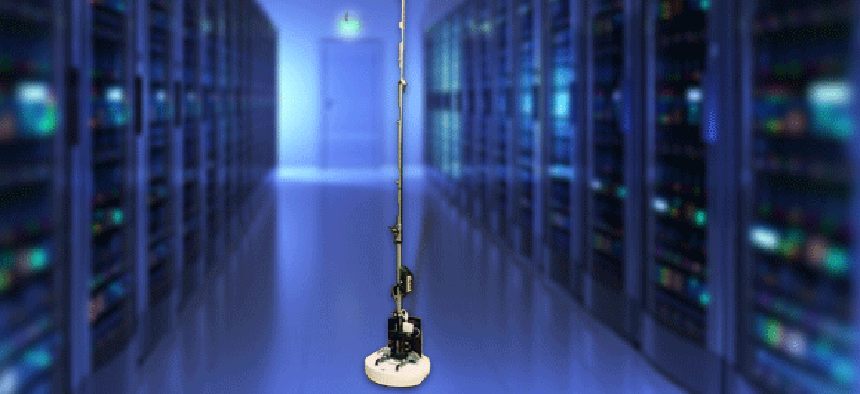Next role for robots: data center diagnosticians


Connecting state and local government leaders
EMC, IBM offer robots that rove data centers in search of temperature anomalies and other indicators of how well the center is maintaining an efficient power curve.
The U.S. Department of Energy last month opened the Energy Systems Integration Facility, a $135 million research center designed to test how power grids, data centers and other IT systems can be made more energy-efficient. In fact, the center itself, located in Golden, Colo., might be the most energy-efficient data center in the world.
One of the systems on its research plan might include the use of robots for energy management and conservation. Recently IBM and EMC developed robots designed to rove data centers and collect temperature, power usage and other data that could affect the performance of data center IT systems.
Cooling alone can account for more than 60 to 70 percent of data center power costs, according to EMC officials, liabilities that can mount up as organizations buy more capacity than needed and overcool their systems. Around 85 percent of data centers also mismanage the provisioning of infrastructure, which increases energy consumption, according to EMC officials.
The EMC Data Center Robot helps combat these problems by patrolling for temperature fluctuations, humidity and system vibrations and locating sources of cooling leaks and other vulnerabilities.
EMC’s DC Robot collects data via digital sensors and sends it through a Wi-Fi connection for processing. An algorithm converts the temperature data into a thermal map, which can be used to identify anomalous hot and cold spots in data center aisles.
Most data centers use a set of fixed sensors to manage temperatures and other energy consumption indicators, an expense that can run into the millions of dollars – “low hanging fruit” that helped justify their investment in the DC Robot, say EMC officials.
While the DC Robot was one of the first data center energy-focused robots, IBM has developed a similar model, which it offers as part of an energy management troubleshooting service.
The firm's Measurement and Management Technologies unit will use the robo-tool to create a "robotic cooling assessment," a three-dimensional temperature and humidity maps to help organizations identify energy sinks and other problem spots in their data centers. The assessment determines a data center’s baseline and high-level cooling capacity.
A third energy diagnostics tool, from Purkay Labs, is a simple portable unit that checks energy-environment data for short or long term intervals. The unit consists of an adjustable carbon fiber rod that measures the air quality at three different heights.
While not mobile and so technically not a robot, “It’s a product that we’ve developed so you can get the temp across the entire aisle,” said CEO Indra Purkayastha.




